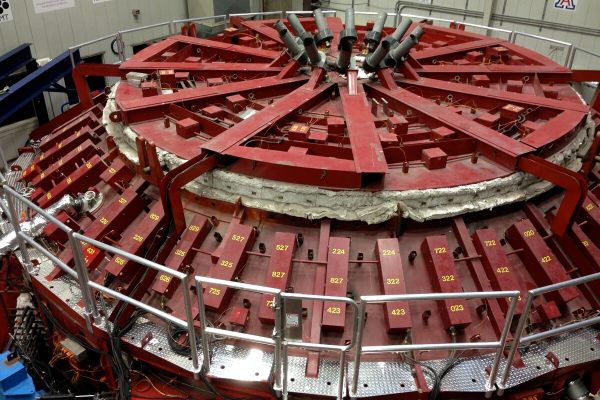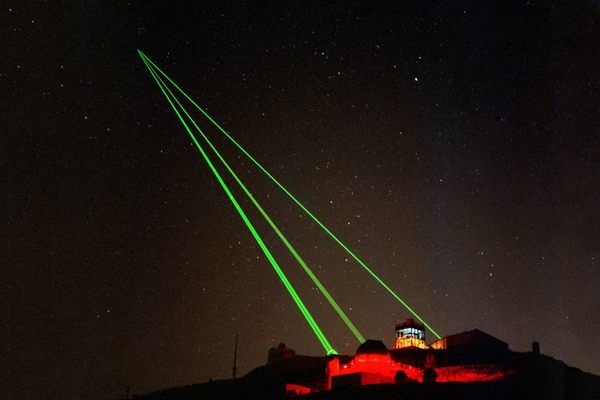AO Edited
Richard F. Caris Mirror Laboratory
Giant telescope mirrors built in a spinning furnace under a college football stadium.
Tucked away under the east side of the Arizona Stadium in Tucson, Arizona, this manufacturing laboratory uses novel techniques and technology to construct giant mirrors (up to 27 feet) that have revolutionized telescopes around the world. The lab is responsible for many important telescope mirrors including the Giant Magellan Telescope at the Smithsonian Astrophysical Observatory.
In 1980, Dr. Roger Angel created a homemade furnace in his backyard. Dr. Angel was curious about the suitability of borosilicate glass, which is often used in glass ovenware, in constructing honeycomb structures for telescope mirrors. The geometry of a honeycomb allows for a remarkably strong structure to be made with a minimal amount of material and weight. He was able to fuse together two custard cups. He continued with further experiments, which led to using ceramic materials and a rotating kiln to cast three six-foot-wide mirrors.
In 1985, with financial support from the U.S. Air Force and the National Science Foundation, Dr. Angel’s efforts were moved to a facility under the University of Arizona football stadium. Initially the lab featured a furnace large enough to make mirrors that were almost 12 feet wide. By 1997, scientists at the lab were building 27-foot mirrors, one of which was used for the Large Binocular Telescope in southeastern Arizona.
A 27-foot mirror requires 25 tons of glass, which is heated to 2,156°F and spins for a week in the furnace. It takes 11 weeks for the mirror, which remains spinning for the duration, to safely cool. The mirror is removed from the furnace and hosed off to expose the glass honeycomb structure, which makes for a strong, light mirror.
The Atlas Obscura Podcast is a short, daily celebration of all the world’s strange and wondrous places. Check out this episode about the Richard F. Caris Mirror Laboratory.
Know Before You Go
Tours of the lab are offered Monday through Friday at 1 p.m. See the website for schedule and cost.

















Follow us on Twitter to get the latest on the world's hidden wonders.
Like us on Facebook to get the latest on the world's hidden wonders.
Follow us on Twitter Like us on Facebook